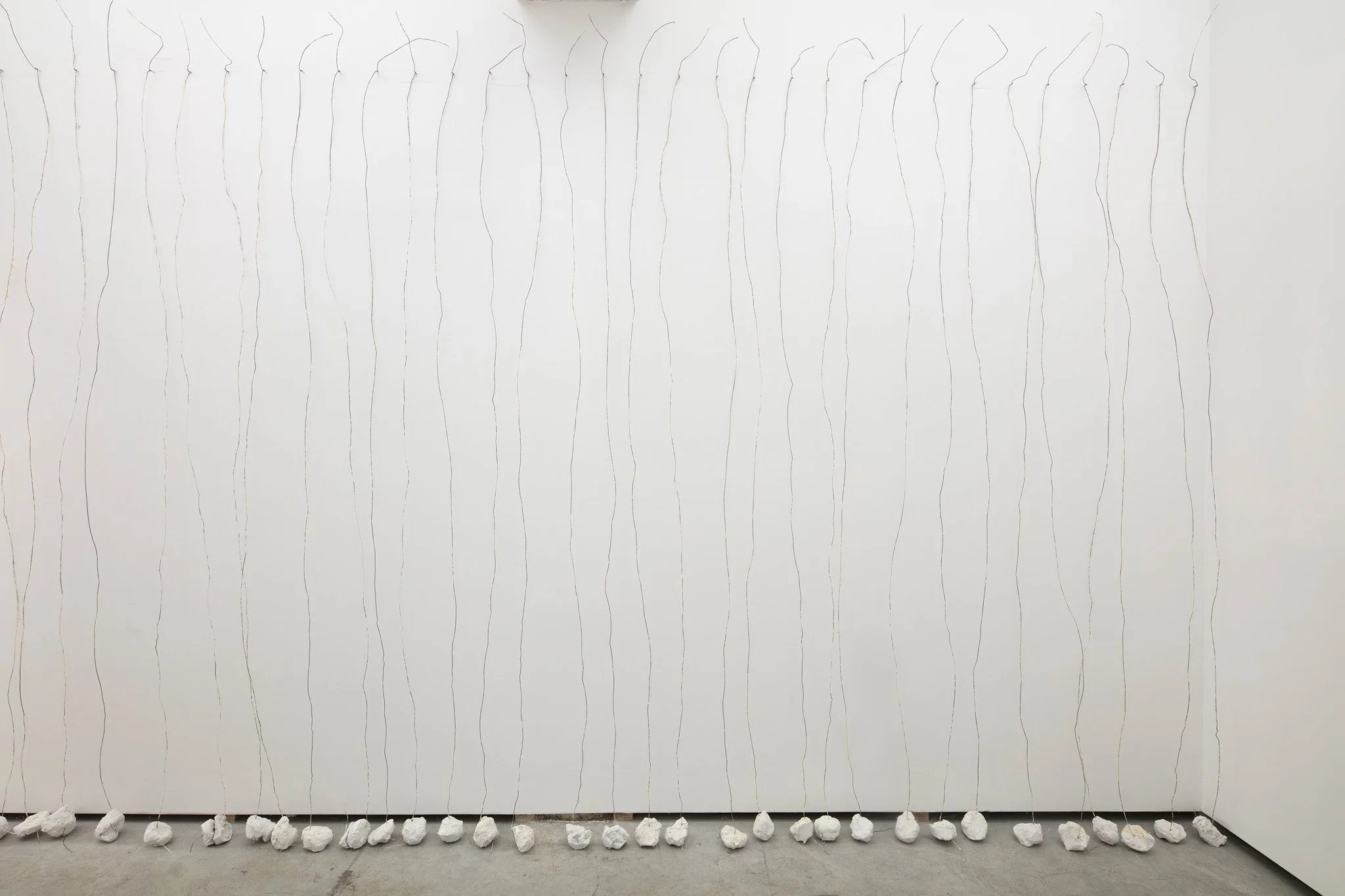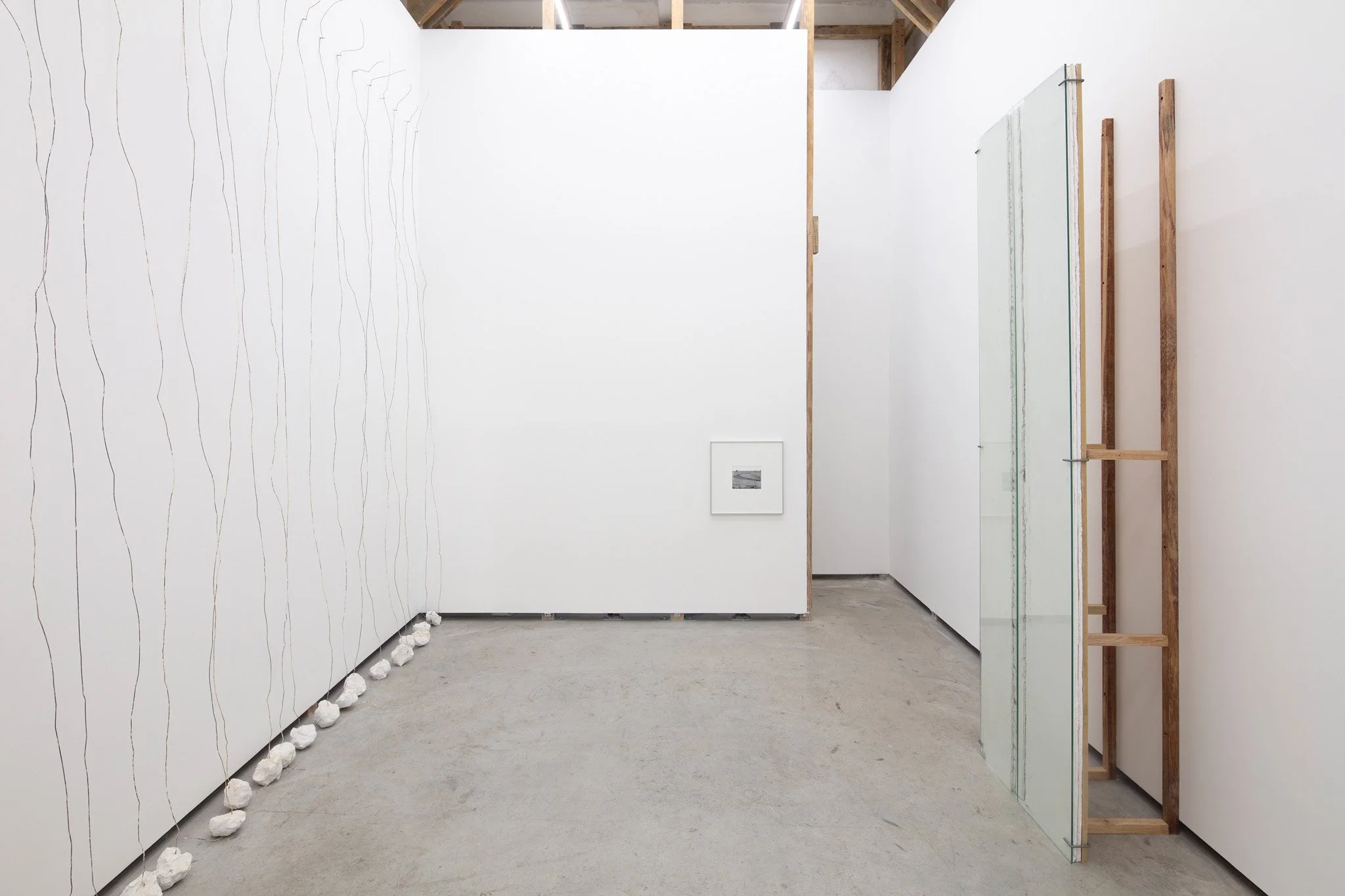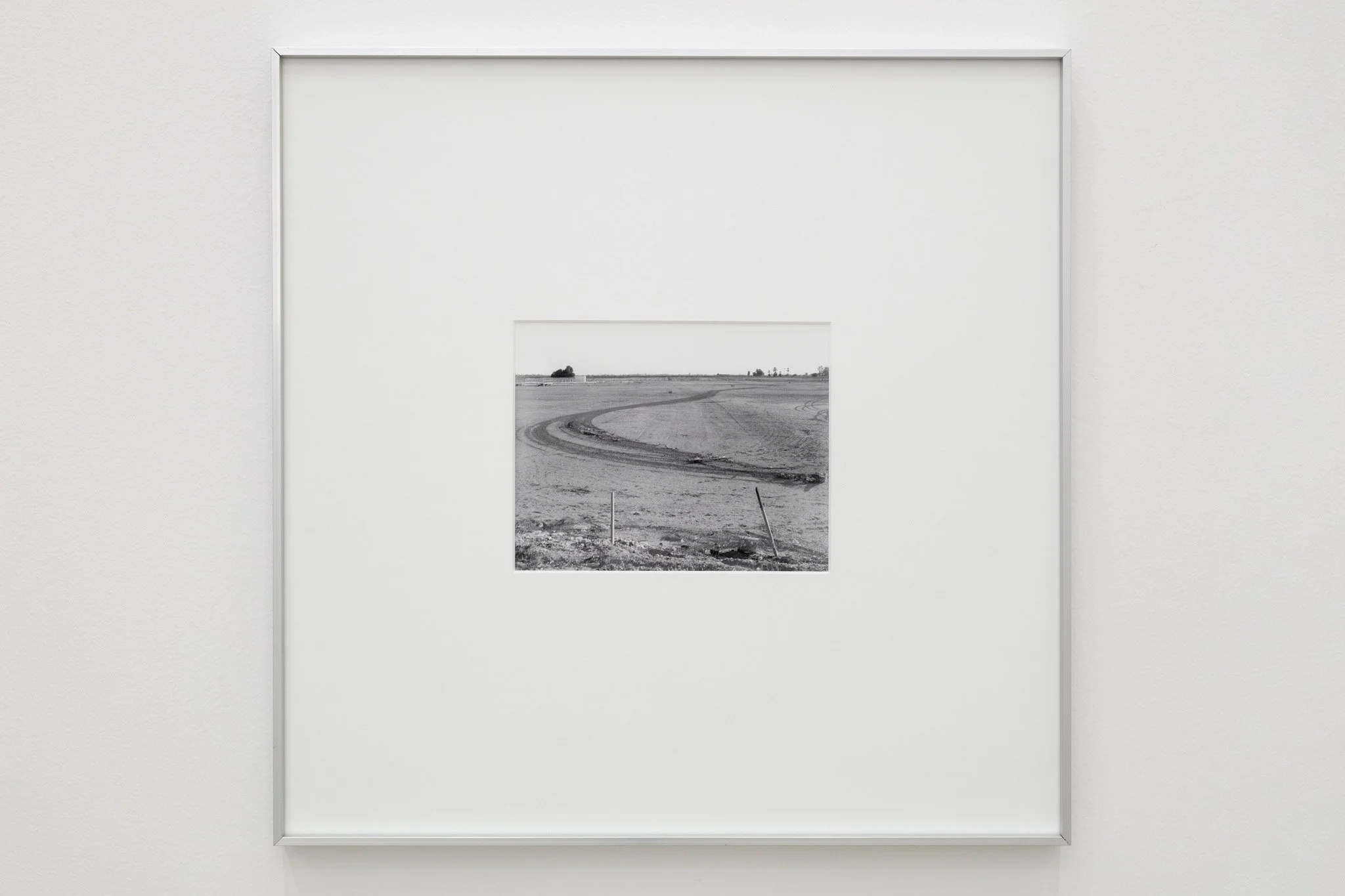Ramón Saturnino: “Aquí no es así”
The front doors of Lodos Gallery in Mexico City are made of glass, allowing passersby to see in from the sidewalk. But a full view of Ramón Saturnino’s first solo exhibition, Aquí no es así, is obstructed by a solid white wall. From outside, one is only able to see the start of a sculptural installation made from the repetition of an object: wires with a whitewashed plaster base that hang from the ceiling.
Saturnino’s sculptural work continues down the entire length of the longest wall of Lodos Gallery. Each wire in the installation is held up by a nail, spaced just a few inches away from the next, and held down by a heavy, organic-shaped counterweight. The arrangement of the sinuous wires patterns a sketchy, fence-like structure across the wall; the tops of the wires, jutting out every which way, mimic the hostile architecture of anti-climb spikes. An artist note tells us that the installation is variable, and is intended to cover the full length of any wall within the limit of 1023 kilometers—the approximated length of the Mexico–USA border wall.
There are many ways to keep people out. Barriers can be physical, psychological, social, chemical, or alchemical. In Aquí no es así, Saturnino, who studied at the Faculty of Architecture at Universidad Nacional Autónoma de México, presents a practice focused on these objects of delineation and the environments they create.
Throughout the exhibition, Saturnino’s use of materials emphasizes the particularities of their surfaces. In Referencia I and Referencia II (2025), the artist installs two pieces of drywall, each nearly touching the next, encased under glass. The liminal space creates a nearly imperceptible void between the solid expanses. The edges of the gypsum board are raw and unfinished, emphasizing the brittle imperfect quality of the drywall, while the glass surface placed on top of the forms subtly reflects the room of the installation, mimicking the gallery itself. There is a space between Saturnino’s sculptural works and the wall of the gallery; the empty interval of each measuring 30 centimeters: a volume that could contain a human form.
The border is cited again in a pair of black-and-white photographs of the Gran Desierto de Altar, where the artist lived for the first eighteen years of his life. Bulgaria-mexicali (4 pm) (2022–2024) presents an open desert landscape marked with the tire tracks of a speeding vehicle that took a sharp turn and slid before a natural barrier. Bulgaria-mexicali (12:01 am) (2022–2024) suggests an opening that echoes the one in Lodos, a reverberation of thresholds that lead into a dark and ominous night. While the expansive vista and the enclosed interior have a paradoxical relationship with space, both allude to the jeopardous passage and the internal territory of those intending to cross.
In the gallery, Saturnino creates a new landscape: one that does not faithfully replicate its model, but rather, one that calls on the material qualities and personal somatic and affective relationships to the paraphernalia of delimitation. Saturnino turns our attention to the substance of territorial and social ordering. The objects he displays are the matter that spaces are composed of—the material that defines here from there.
Ramón Saturnino: Aquí no es así is on view at Lodos from March 13 through May 10, 2025.
Edited by Jubilee Park





